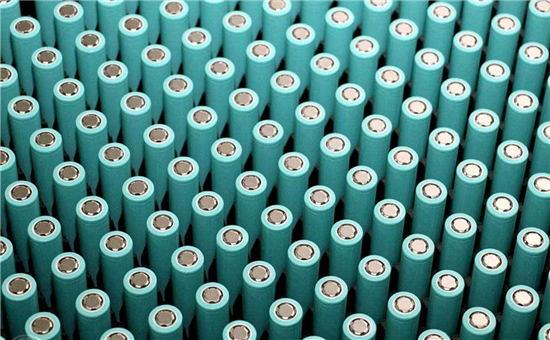Lithium Polymer Battery Maintenance-Cycle Life And Maintenance
Mar 11, 2020 Pageview:4868
Accomplishing a battery's ideal performance is an excellent deal like compromising in a new relationship, you must be happy to give and take in equivalent sums. Performing proper maintenance checks permits you to avoid these messes while at the same time gaining by a battery's life span.
Your maintenance activities can influence the life of a lithium polymer battery and its lead-acid battery counterpart from multiple points of view. Furthermore, all different parameters equal, lithium Polymer batteries regularly have fewer maintenance responsibilities than lead-acid batteries, which make them a choice of selection.
How long do lithium polymer batteries last?
You must be thinking about what the battery life of lithium polymer batteries is? The lifespan range for consumer batteries is between 300 and 500 charge cycles, and then the industrial range alters drastically depending on the voltages.
Maximizing the number of cycles and battery capacity depends upon the operating and usage environment. Luckily, the maintenance to address these factors is fairly straight forward. Certain conditions affect the longevity of the lithium polymer batteries :
Once the lithium batteries reach a temperature hotter than 30 °C, it is considered to be the hottest temperature that doesn't allow its internal temperature during storage and lowers the life span of the battery.
The other factor is the charge voltage. Lithium polymer batteries used in devices like laptops and cell phones produce a charge of 4.20 volts per cell. This also can decrease the total lifespan because it Is generally higher than 4.10 V/cell voltage threshold.
How do you maintain Lithium-Polymer Battery?
Maintaining lithium batteries is essential when you utilize the batteries. The proper maintenance provides long-lasting life and prevents it from damage for the batteries. Here are the precautions to be followed for maintaining the battery.
Watch and note the run time that another completely energized battery accommodates controlling your item.
Utilize this new battery run time as a premise to look at run times for more established batteries.
The run time of your battery will shift depending on the product's configuration and the applications that you run.
Routinely check the battery's charge status.
Try to observe the batteries where the efficiency of the battery is getting decreased.
Replace the battery if you either find of these following conditions:
The battery run time dips under about 80% of the first run time.
The battery charge time increases rapidly.
If you don't follow the guidelines, and you come to a situation where you have no charging. Try not to endeavor to recharge it or to utilize it. Replace it with another battery.
How do you prolong Lithium-Polymer batteries?
If you misuse LiPo cells, then it will give a small number of cycles and can also result in fire. Good quality cells cost more initially and provide you the long-lasting time. If you are looking to prolong your lithium batteries, then you have to follow these guidelines:
Buy excellent quality battery packs. Cheap far east cells are an awful investment concerning life,
execution, and security.
Purchase a decent quality charger structured explicitly for charging Lithium Polymer cells.
Ensure the charger has a showcase that will show the measure of vitality that is returned to your packs regarding "mAh" and one that shows the voltage of the individual cells being charged. This is fundamental to checking and along these lines, adjusting your utilization and charging of your batteries.
Purchase an advanced voltmeter. It is a fundamental device for checking battery packs.
Purchase a wattmeter. Again this is a first apparatus to quantify flows, voltages under burden and watts.
Most modern quality chargers presently have worked in cell adjusting capacity.
Always utilize this component and ensure you select the "Parity" program on your.
charger.
Screen the individual cell voltages during charging, as this will give you a sign of the strength of every cell inside the pack.
Aim to draw less than 60% of the most extremely consistent evaluated current of your LiPo's.
If you draw less, at that point, 60%, your cells will last considerably more.
Avoid releasing all the more than 80% of the limit of the cell. If you reliably put less, at that point, 80% back, you will increment the life of your cells. Start with short flights and time them. Make a note of what number of "mAh" you put back and separate the quantity of "mAh" continuously to get an estimated "mAh" every moment figure.
Utilize this mAh/minute figure to compute the number of minutes you can fly without going over the 80% figure.
Do not fly until the ESC slices capacity to your engine, as this will genuinely abbreviate the life of your LiPo's.
Charge at 80% of the limit of the LiPo. For example, a 1000mAh pack ought to be charged at 800mAh (0.8Ah) or less.
Do not charge your packs underneath 10oC/50oF and certainly not beneath 0oC/32oF.
Do not charge hot cells. Warm cells are OK, and cool cells are ideal. Let hot batteries cool before charging.
Lithium Polymer cells don't have a "memory" not at all like Ni-Cad's, and hence they SHOULD NOT be cycled. Cycling will lower the voltage down to 3.0 V per cell, which will also shorten battery life.
If you intend to store your LiPo cells for an all-inclusive period (more than one month), release them as you normally do. At that point, charge them too just 3.80V/3.85V per cell.
If you release your LiPo's down to 3.30V per cell or less (no Load), you will harm them and abbreviate their life.
Conclusion –
The life cycle of lithium batteries provides necessary precautions for maintenance. It also provides details about the durability and longevity of the battery through which you can ensure the batter you use gets longer life and good performance.
Leave Message
Hottest Categories
-
Hottest Industry News
-
Latest Industry News












